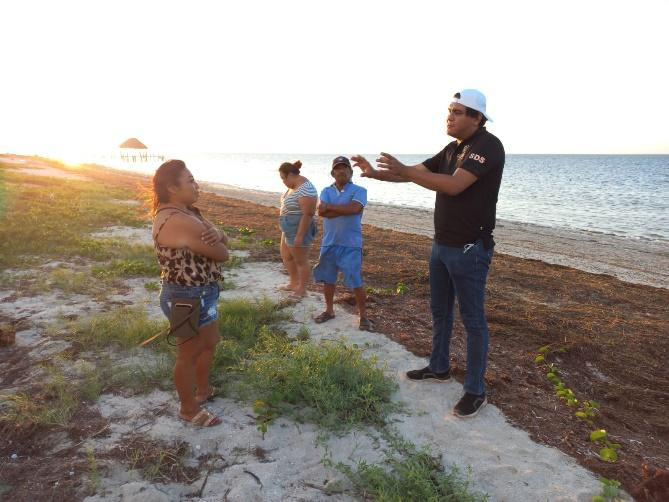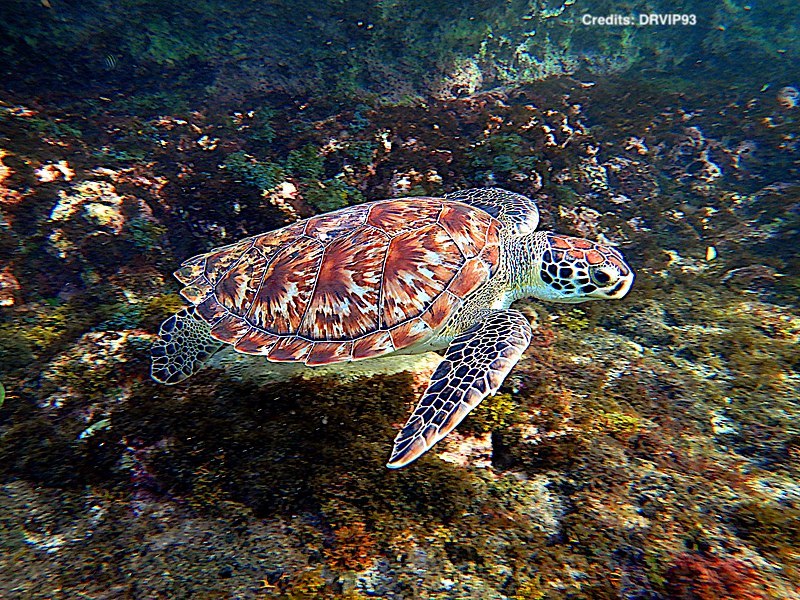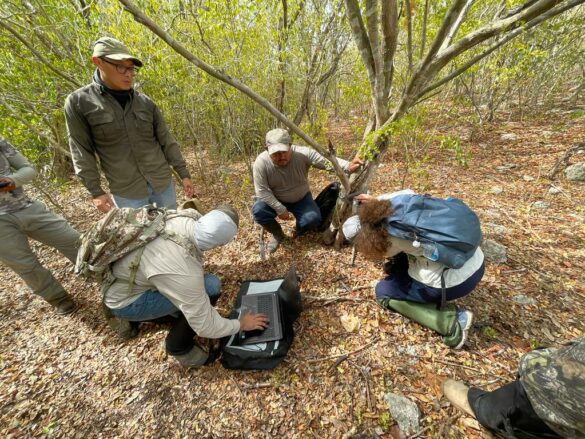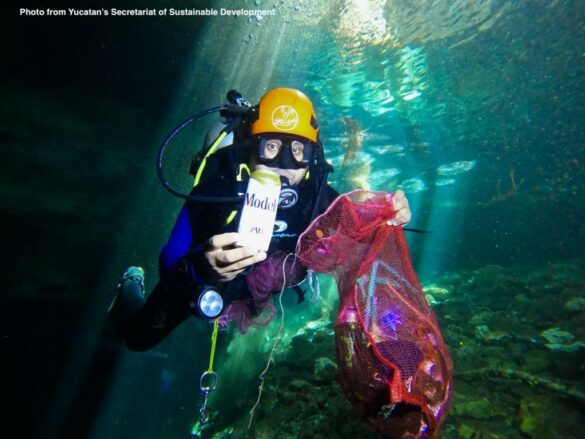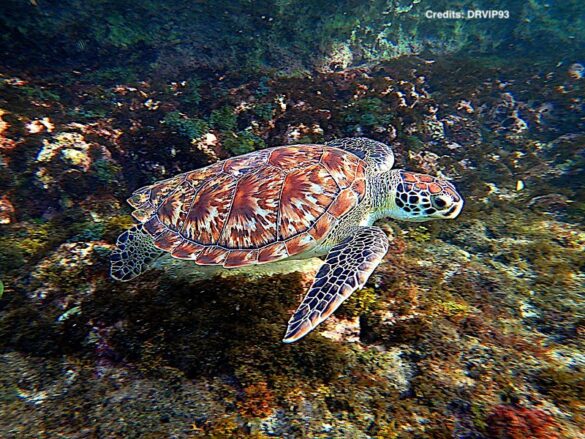The Government of the State of Yucatan has joined the international effort for the protection of these species. Through the Secretariat of Sustainable Development, the State has created three Sea Turtle Protection and Conservation Centers, located in the municipalities of Sisal, Telchac Puerto and Dzilam de Bravo, where, with volunteers from the area and other agencies, they coordinate efforts and create strategies for the conservation and protection of nests and sea turtles that arrive in the area.
Background
Worldwide, all sea turtle species are in some category of risk, which is why national and international laws have been created to take care of them. In the case of Mexico, they are protected by NOM-059-SEMARNAT-2010 and NOM-162-SEMARNAT-2012. Of the seven species of sea turtles, six nest on the coasts of the Mexican Republic and two of them nest on the coasts of the Yucatan coast: the critically endangered hawksbill turtle (Eretmochelys imbricate) and the endangered white turtle (Chelonia mydas). Sporadic nesting of Loggerhead Turtles (Caretta caretta) and Kemp’s Ridley Turtles (Lepidochelys kempii) have also been recorded in the region.
Localizing the solution
The Program for the Protection and Conservation of Sea Turtles of the Ministry of Sustainable Development is developed in three different municipalities in the coastal zone of the state of Yucatan. To the north-west, between the municipalities of Hunucmá and Celestún, the Center for the Protection and Conservation of Sea Turtles (CPCTM) Sisal is located in the Palmar Reserve. In the center of the state’s coast, in the municipality of Telchac Puerto, the CPCTM Telchac Puerto is located on the coastline adjacent to the Ciénegas y Manglares State Reserve. In the central-eastern part of the state, the CPCTM Dzilam de Bravo is located in the municipality of Dzilam de Bravo and covers part of the coastal dune of the Dzilam de Bravo Reserve. Together they protect approximately 130 km of beach where species such as hawksbill turtles and white turtles arrive to nest during the months of April to September.
Monitoring and Community Education
Throughout the nesting season (April to September), trained volunteers from the municipalities where the CPCTMs have been established, collaborate to monitor, care for, and protect approximately 130 km of beach during nighttime hours (where every night turtles arrive to lay their eggs). Volunteers and technical personnel are in charge of identifying, locating and marking sea turtle nests and species and, only if necessary, relocating the nests that, according to their criteria, are at imminent risk.
After the two months of egg incubation and constant monitoring, daytime monitoring begins, in which volunteers and technical staff go to the site where the nest is located, opening it to extract and make a count and residual analysis, to obtain an approximate value of hatched turtles.
Also, during the nesting period, volunteers usually provide relevant information through workshops, school and municipal talks. The main objective of these efforts is to raise awareness of the importance of sea turtles in the ecosystem, how to take care of them and what to do to protect their habitat.
The importance of associations and partnerships
For certain tasks related to the conservation of the species, the volunteer groups are supported by different institutions and associations that provide them with different supplies that allow them to develop their own activities in each camp. Part of the material donated by these companies is material catalogued as non-consumable, including head lamps for night patrols, GPS, rechargeable batteries and battery chargers, material for dissemination (signage, brochures,) gasoline uniforms. By covering these essential requirements, volunteers can cover more areas and record a greater number of clutches, thus having a positive impact on the care and conservation of the species.
Results and impacts so far
- At the end of the 2023 nesting season, a slight recovery in sea turtle populations was observed, with a significant increase compared to the previous season. With the help of volunteers and technical personnel, 1,835 sea turtle nests were protected in the three CPCTMs.
- A total of 88 volunteers have been involved in the Project during the 2023 season, of which 43 have been men and 45 women. In this sense, we could speak of gender equality during the development of the Project.
- This Project has managed to reintegrate 178,763 sea turtle hatchlings into the environment, which helps to mitigate the ecological and anthropic pressures on this group of fauna.
- Likewise, as part of the social sustainability, there is the participation of various groups of volunteers from the localities where the camps are located, thus promoting the appropriation of the Project to the local society.
The Secretary of Sustainable Development of the State of Yucatan has the rights to all of the photos.
